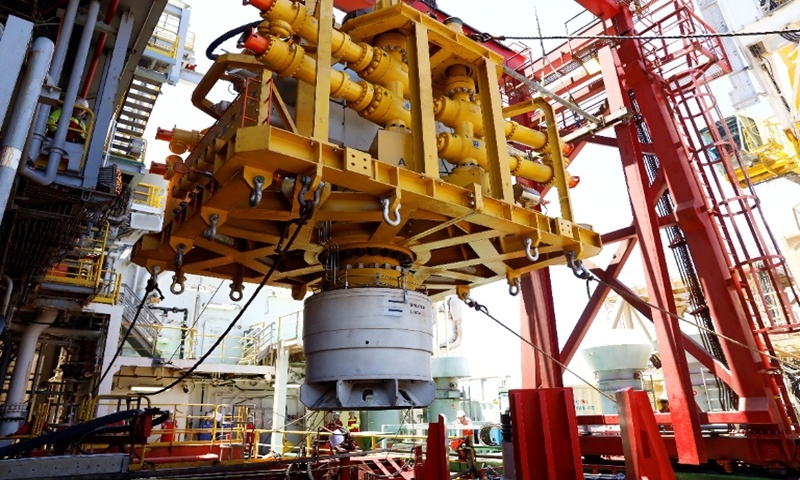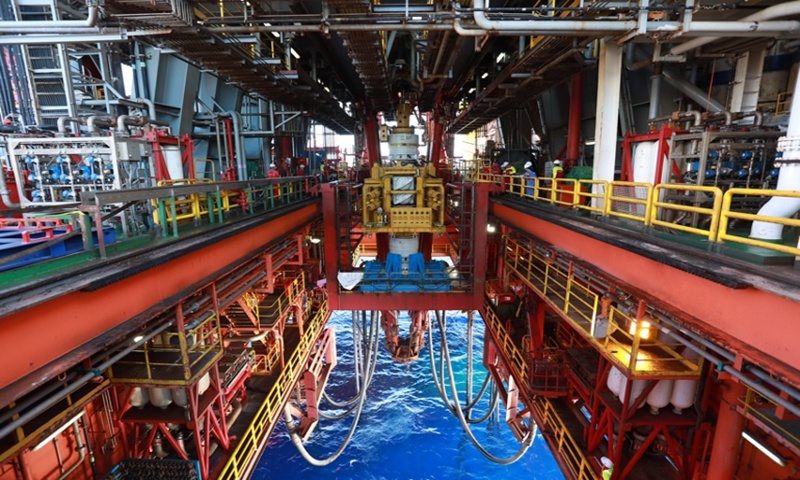
China's first set of subsea capping stack. (Photos: agencies)
China's first set of subsea capping stacks have been successfully tested in deep water in the South China Sea, with measured performance output meeting international advanced levels.
The trial marked a major breakthrough that has filled the technical gap in the field of deep-water oil and gas emergency equipment development in China, marking that China's offshore oil equipment manufacturing level has entered international advanced ranks, according to a document sent to the Global Times from China National Offshore Oil Corporation (CNOOC) on Wednesday.
The subsea capping device is a major offshore well control equipment which integrates mechanical, hydraulic, sealing, acoustic and information technology, according to industry report.

China's first set of subsea capping stack made trial run at the South China Sea.
Zhang Chong, a senior engineer of the device at CNOOC, said that the subsea capping stacks can operate at a water depth of 3,000 meters and weigh more than 130 tons, equivalent to the combined weight of three modern battle tanks.
The subsea capping device will be stored in the offshore oil and gas exploration logistics base located in China's coastal areas. The operating cost of the capping device is 40 percent lower than that of similar equipment used in foreign countries, and boasts superior emergency response time, and enhanced equipment support for the efficient disposal of domestic offshore oil and gas blowout emergencies.
"Blowout is the most serious accident in oil and gas exploration and development. The environment of offshore oil industry, especially the deep-water exploration, is more complex than the onshore environment. The challenge of handling blowout accidents is greater, and the need for special treatment methods is more urgent," said Liu Shujie, deputy general manager of CNOOC Hainan Branch.
The Deepwater Horizon oil spill in the Gulf of Mexico in 2010, the largest marine oil spill in history, was handled effectively by the first use of the most advanced subsea capping device, Liu noted.
The use of a capping stack to control a flowing well has been part of the industry's response tool kit for some time. The capping stacks have flanges and intervention adapters installed to either shut-in the well while a relief well was being drilled, or to have intervention equipment rigged up to stop the flow, according to a report by the International Association of Oil & Gas Producers (IOGP) published in February 2020.


